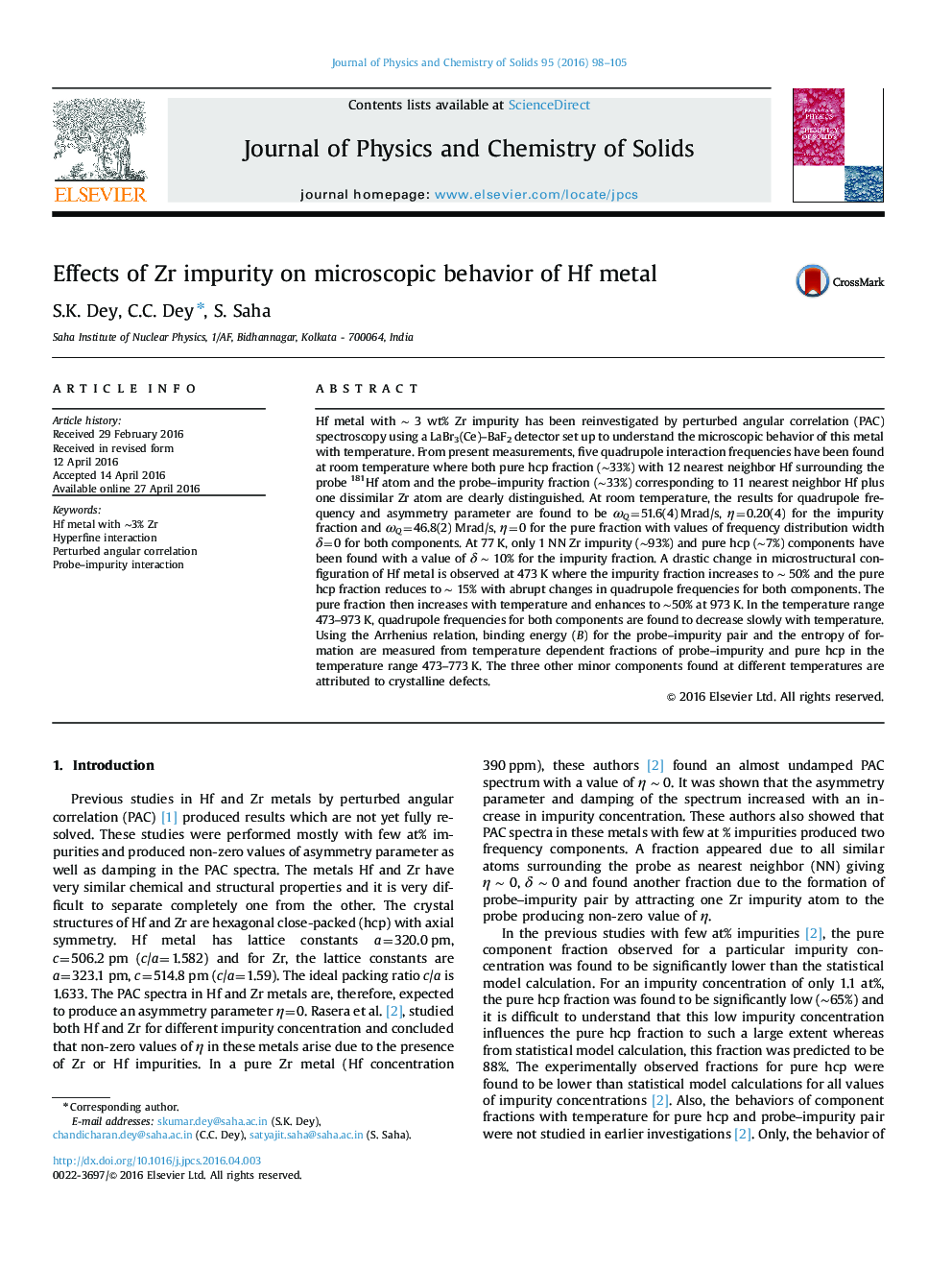| Article ID | Journal | Published Year | Pages | File Type |
|---|---|---|---|---|
| 1515377 | Journal of Physics and Chemistry of Solids | 2016 | 8 Pages |
•Microscopic behavior of Hf metal with 6 at% Zr has been studied by TDPAC.•Components with pure hcp and 1 Zr impurity as nearest neighbor are observed.•Maximum pure hcp fraction (∼50%) is found at 973 K.•Ratio of impurity to pure hcp fraction follows Arrhenius behavior.•Entropy of formation and binding energy of probe–impurity pair have been measured.
Hf metal with ∼ 3 wt% Zr impurity has been reinvestigated by perturbed angular correlation (PAC) spectroscopy using a LaBr3(Ce)–BaF2 detector set up to understand the microscopic behavior of this metal with temperature. From present measurements, five quadrupole interaction frequencies have been found at room temperature where both pure hcp fraction (∼33%) with 12 nearest neighbor Hf surrounding the probe 181Hf atom and the probe–impurity fraction (∼33%) corresponding to 11 nearest neighbor Hf plus one dissimilar Zr atom are clearly distinguished. At room temperature, the results for quadrupole frequency and asymmetry parameter are found to be ωQ=51.6(4) Mrad/s, η=0.20(4) for the impurity fraction and ωQ=46.8(2) Mrad/s, η=0 for the pure fraction with values of frequency distribution width δ=0 for both components. At 77 K, only 1 NN Zr impurity (∼93%) and pure hcp (∼7%) components have been found with a value of δ ∼ 10% for the impurity fraction. A drastic change in microstructural configuration of Hf metal is observed at 473 K where the impurity fraction increases to ∼ 50% and the pure hcp fraction reduces to ∼ 15% with abrupt changes in quadrupole frequencies for both components. The pure fraction then increases with temperature and enhances to ∼50% at 973 K. In the temperature range 473–973 K, quadrupole frequencies for both components are found to decrease slowly with temperature. Using the Arrhenius relation, binding energy (B) for the probe–impurity pair and the entropy of formation are measured from temperature dependent fractions of probe–impurity and pure hcp in the temperature range 473–773 K. The three other minor components found at different temperatures are attributed to crystalline defects.
